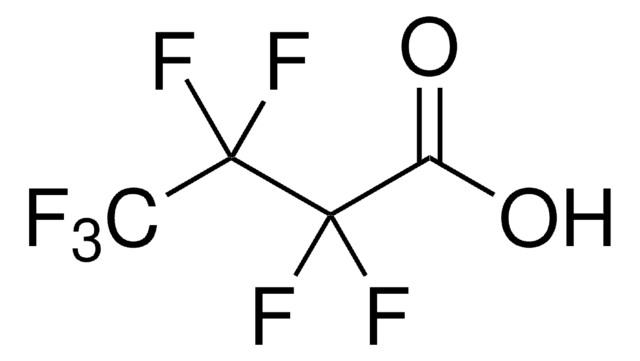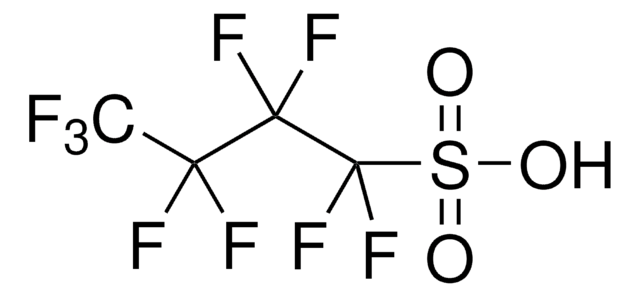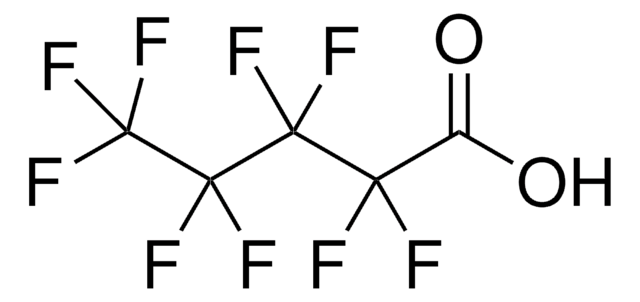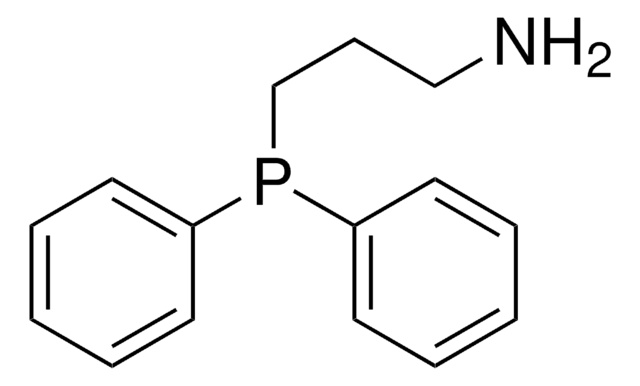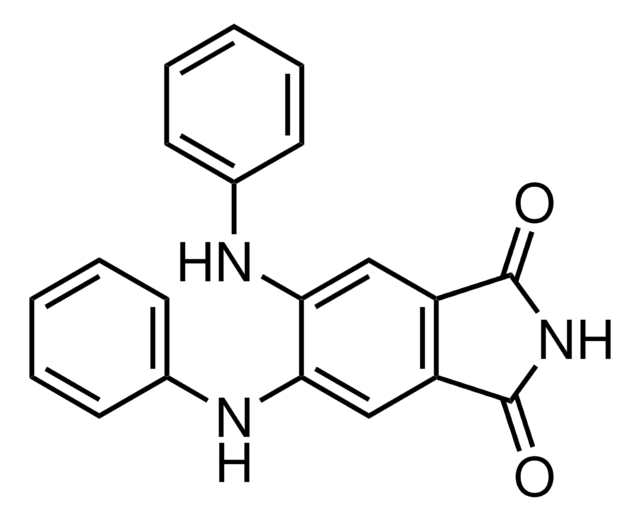Kluczowe dokumenty
52411
Heptafluorobutyric acid
suitable for ion chromatography, ≥99.5% (GC)
Synonim(y):
Edman Reagent No. 3, HFBA, Perfluorobutyric acid
About This Item
Polecane produkty
gęstość pary
7 (vs air)
Poziom jakości
ciśnienie pary
~10 mmHg ( 25 °C)
opis
anionic
Próba
≥99.5% (GC)
Formularz
liquid
okres trwałości
limited shelf life, expiry date on the label
metody
ion chromatography: suitable
współczynnik refrakcji
n20/D 1.3 (lit.)
bp
120 °C/755 mmHg (lit.)
gęstość
1.645 g/mL at 25 °C (lit.)
ślady kationów
Al: ≤0.5 mg/kg
Ba: ≤0.01 mg/kg
Bi: ≤0.01 mg/kg
Ca: ≤2 mg/kg
Cd: ≤0.01 mg/kg
Co: ≤0.01 mg/kg
Cr: ≤0.01 mg/kg
Cu: ≤0.01 mg/kg
Fe: ≤0.1 mg/kg
K: ≤0.5 mg/kg
Li: ≤0.01 mg/kg
Mg: ≤1 mg/kg
Mn: ≤0.01 mg/kg
Mo: ≤0.01 mg/kg
Na: ≤3 mg/kg
Ni: ≤0.01 mg/kg
Pb: ≤0.01 mg/kg
Sr: ≤0.01 mg/kg
Zn: ≤0.05 mg/kg
ciąg SMILES
OC(=O)C(F)(F)C(F)(F)C(F)(F)F
InChI
1S/C4HF7O2/c5-2(6,1(12)13)3(7,8)4(9,10)11/h(H,12,13)
Klucz InChI
YPJUNDFVDDCYIH-UHFFFAOYSA-N
Szukasz podobnych produktów? Odwiedź Przewodnik dotyczący porównywania produktów
Zastosowanie
Powiązanie
produkt powiązany
Hasło ostrzegawcze
Danger
Zwroty wskazujące rodzaj zagrożenia
Zwroty wskazujące środki ostrożności
Klasyfikacja zagrożeń
Skin Corr. 1A
Kod klasy składowania
8A - Combustible corrosive hazardous materials
Klasa zagrożenia wodnego (WGK)
WGK 3
Temperatura zapłonu (°F)
Not applicable
Temperatura zapłonu (°C)
Not applicable
Środki ochrony indywidualnej
Faceshields, Gloves, Goggles, type ABEK (EN14387) respirator filter
Wybierz jedną z najnowszych wersji:
Masz już ten produkt?
Dokumenty związane z niedawno zakupionymi produktami zostały zamieszczone w Bibliotece dokumentów.
Klienci oglądali również te produkty
Nasz zespół naukowców ma doświadczenie we wszystkich obszarach badań, w tym w naukach przyrodniczych, materiałoznawstwie, syntezie chemicznej, chromatografii, analityce i wielu innych dziedzinach.
Skontaktuj się z zespołem ds. pomocy technicznej